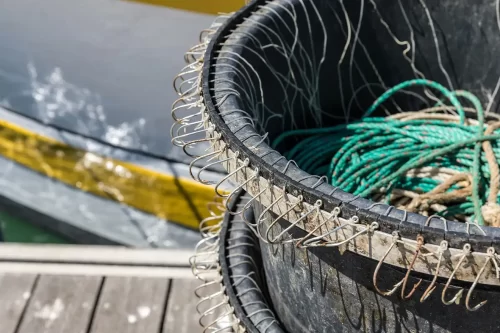In the U.S., you can’t slap a license plate on your car from a state you don’t live in. Not so for ships on the ocean. Of course, ships don’t have license plates; they have flags, but it’s not uncommon for a fishing vessel to fly a flag from a country that has no actual ties to the boat, the owner, or the captain behind the wheel.
Many countries have what’s called an open registry, which means they allow foreign vessels to register and fly their flags, so long as the vessel owner pays the fee and meets the registration requirements.
There’s money to be made in selling registrations, which is why some countries sell them to fishing vessels that have nothing to do with their own fishing interests. In fact, a country doesn’t even need to have fishing interests to register an ocean-going fishing vessel. Landlocked Mongolia is a perfect example of that.
The disconnect between some of these countries and the activities of the vessels they register is inherently problematic. With no incentive to properly regulate, many countries with open registries have very weak regulations and slim to no monitoring. These are called Flag of Convenience (FoC) nations. The International Transport Union lists 35 FoC countries.
Many ship owners intentionally register under an FoC to avoid more restrictive rules and higher expenses of registering in their own countries. And, intentional or not, they also obscure their true origins. In some cases, vessels bounce around from one FoC to another, further clouding traceability.
It’s no surprise, then, that a high proportion of vessels engaged in illegal, unreported and unregulated (IUU) fishing fly a flag of convenience. Our data scientists recently found a strong correlation between FoC vessels and transshipment, a practice that can facilitate illegal activity. In our new report “The Global View of Transshipment: Preliminary Findings,” data scientists from SkyTruth and Global Fishing Watch found that 48 percent of the refrigerated cargo vessels–large ships that collect catch from multiple fishing vessels and have been associated with a high percentage of IUU fishing–are registered under FoCs.
The image of the Global Fishing Watch Map above shows the activity of fishing vessels registered to Belize, an FoC country, from February 2013 to February 2017. It’s interesting to note that, during that time, five distinct patterns emerge, and none of them appear anywhere near Belize. The tracks in the image are color-coded to differentiate the patterns.
One pattern reveals heavy fishing off the coast of West Africa and extending into the equatorial Atlantic. Another shows repeated trips from Zambia into the south Atlantic, while one shows fishing in the Indian Ocean and around Madagascar. There is a small pattern of a few vessels transiting from Norway to West Africa, and finally, one group of vessels fishes off Argentina and travels back and forth to East Asia.
Check out these vessels yourself on the Global Fishing Watch Map. (You must be registered and logged in.)


